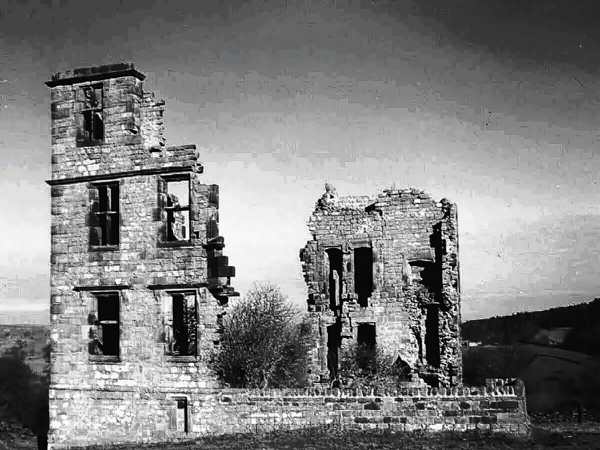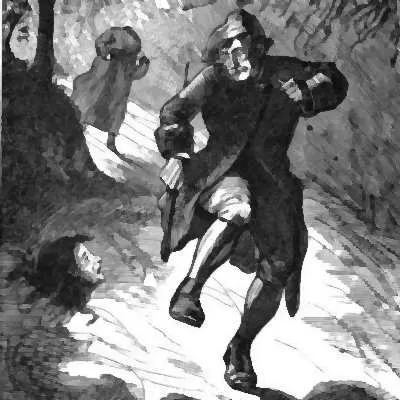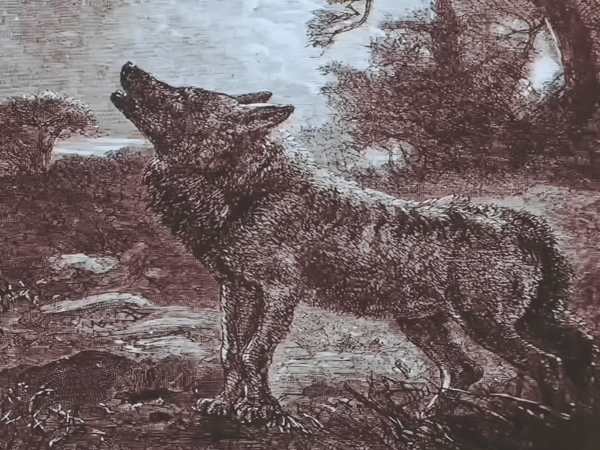British Legends: The Haunting Tales of Boggarts and Devil Dogs!
While werewolf tales might be scarce in Britain, there is no shortage of eerie stories about other supernatural creatures, particularly those involving strange, spectral dogs and mischievous beings known as “boggarts.” These legends, woven into the fabric of British folklore, particularly in the northern counties, offer a glimpse into a rich tradition of ghostly encounters, mysterious creatures, and chilling tales that have been passed down through generations.
The Vanishing Wolves of Britain
Unlike other European countries, Britain doesn’t have a deep tradition of werewolf lore. This could be because wolves were thought to have been wiped out in the Middle Ages, with legends stating the last wolf was killed at Humphrey Head in Lancashire around 1390. However, records show that bounties for wolves persisted into the late 15th century, with the wolves’ final refuges believed to be the remote forests of Lancashire, Derbyshire, and Yorkshire. By the reign of Henry VII (1457-1509), wolves were likely extinct or exceedingly rare, as noted by Joseph Strutt in his 1801 book The Sports and Pastimes of the People of England.

Rise of Boggarts: Britain’s Mischievous Spirits
While the werewolf might be missing from British legends, stories of boggarts more than make up for it. The term “boggart” comes from the same root as “bogey,” “bogle,” and “buggan,” all of which are names for malevolent sprites or goblins. Boggarts are shape-shifters, their forms ranging from small, gnome-like figures to terrifying, monstrous entities. They are known to cause mischief, often spooking cattle, horses, and other livestock.
Boggarts can reside anywhere — from the eaves of old houses to deep, wooded valleys like Boggart Hole Clough, a wooded area northeast of Manchester. In some tales, they appear almost human, while in others, they manifest as a headless woman who chases travelers through the dark lanes of Longridge.
Boggart Tales: Mischief and Mayhem
The tales of boggarts are numerous and varied. One popular story is that of the “Boggart Flitting.” In Lancashire, “to flit” means to move house, and in this tale, a family, desperate to escape a troublesome boggart, packs their belongings to leave. However, as they prepare to depart, they hear the boggart’s voice cry out, “Owd on, I’m comin’ too!” Realizing there is no escaping their unwanted companion, they reluctantly unpack and settle back in.

Another common story involves poachers in the woods near Houghton Tower who, thinking they have caught rabbits, carry sacks over their shoulders. As they walk, one sack speaks, asking, “Where are ta, lad?” The reply comes from the other sack, “Inna sack, on a back, goin’ up Houghton Brow.” Realizing they have captured boggarts, not rabbits, they drop the sacks in fright and flee.
The Devil Dogs of Lancashire and Beyond
Boggarts sometimes take on the form of large black dogs with glowing red eyes, haunting moors and hilltops, preying on unwary travelers. One such creature is said to roam Pendle Hill, a spectral dog as big as a sheep, lurking among the cloughs and slopes in search of victims. This is the boggart that supposedly spoke to Alizon Device, a woman accused of witchcraft in 1612, offering to lame a local peddler named John Law.
Another fearsome dog haunts the Cliviger Gorge, a massive, shaggy beast with eyes like saucers and paws so large they sound like splashing water. Locals call this creature “Trash,” but when it howls mournfully, it is known as “Skriker.” Those who hear its “skriking” are said to face imminent death.
The Ghostly Hound of Dobb Park Lodge
In Yorkshire, between Skipton and Harrogate, lie the ruins of Dobb Park Lodge, once a grand Tudor mansion. Beneath the house, a mysterious dungeon was long rumored to be haunted by unearthly sounds. One day, a brave local, fortified by strong spirits, decided to investigate. He descended into the dungeon, following a twisting tunnel until he reached a vast hall. There, he was startled to find an enormous black dog sitting by a roaring fire, speaking in a human voice.
The dog offered the man a choice: drink all the liquor in a glass, open a chest, or draw a sword. Weighing his options, he attempted to drink from the glass, but its contents were so scalding hot that he spat it out, dropping the glass to the floor. Suddenly, the chest flew open to reveal piles of gold, and the sword was drawn by an unseen force. The room went dark, the fire extinguished, and a terrible screeching filled the air. Terrified, the man fainted and awoke in silence, finding his way back to the surface. To this day, no one has dared to return to that dungeon, leaving the chest of gold undisturbed.
The Enduring Mystery of Boggarts
These stories, though fantastical, are part of a rich tradition of British folklore that continues to captivate the imagination. Boggarts and devil dogs are woven into the cultural fabric of the North, reminding us that even in a world of reason, there is still room for mystery and the unknown.

